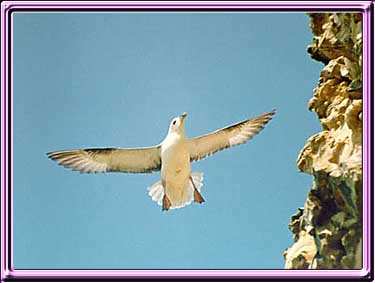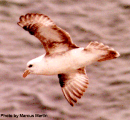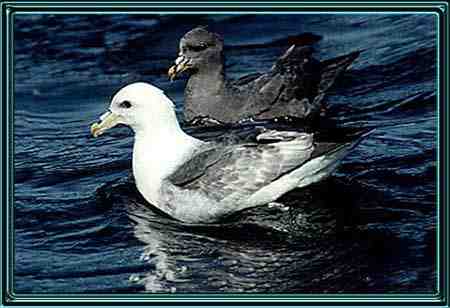
Fulmarus glacialis
(The Fulmar)
(The Fulmar)
As late as 1878 Fulmars were known to breed on St Kilda, but since then they have spread almost around the coast of Britain, (except in the south east where there are few suitable sites), and along the south coast. They are powerful and graceful seabirds, seldom coming to land except to breed and are the most widespread of the British petrels. They are easy to recognise with their stiff winged flight interspersed with an occasional quick flapping. The Fulmar's gracefulness dissappears when it reaches land. It often needs several attempts to settle on a cliff and, once there, shuffles about clumsily.
The plumage is white with a grey mantle and tail and no black. The bill is thick with a tube on top. Both sexes are similar. There are what is known as the "Light Morph"and the "Grey Morph", pictured above is the grey morph,and below the light morph. The Fulmar's plumage is impregnated with oil which has a strong musky smell. Disturb them when they are breeding and they will vomit a foul smelling oily substance from their beak.
Biology:
Size: Fulmars grow to 18 inches long with a wingspan of 42 inches.
Habitat: The ocean and at breeding time the cliffs.
Nest: There is usually no nesting material, the egg is laid straight onto the rocky ledge.
Eggs: Fulmars have one clutch per year which consists of a single white egg which has a rough surface and is easily stained by damp.
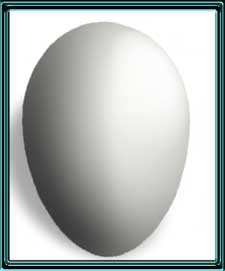
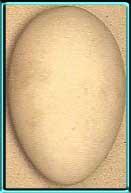
A pristine newly laid egg next to one damp stained
Food: Oily offal and refuse, fish and cuttles.
